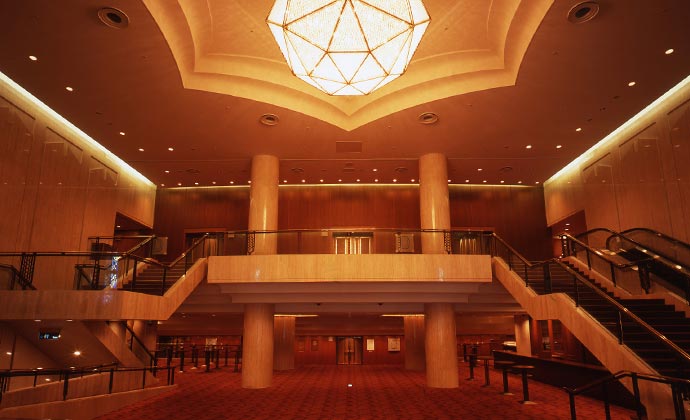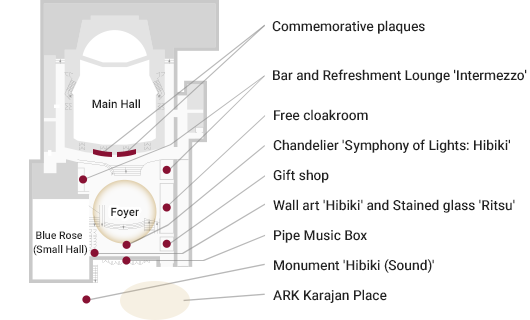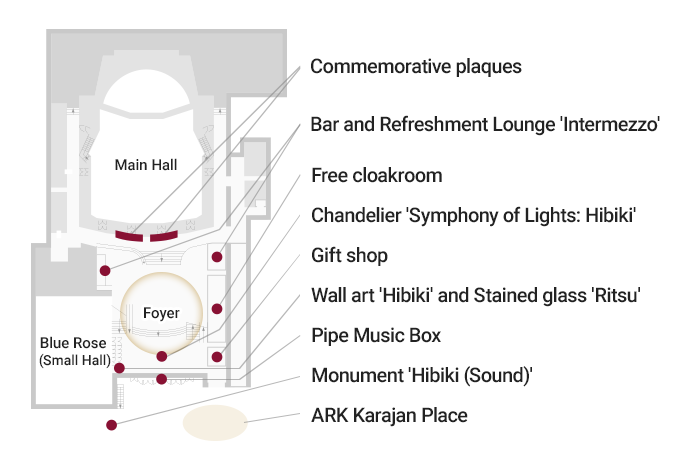- SUNTORY HALL
- Facilities
- Foyer
Facilities
Hospitality




Art works
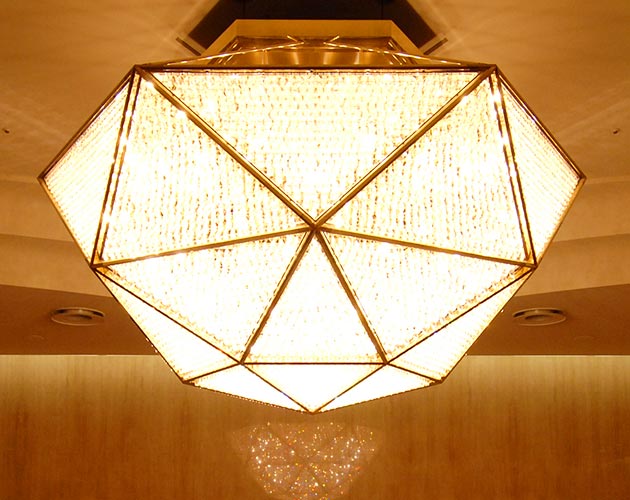
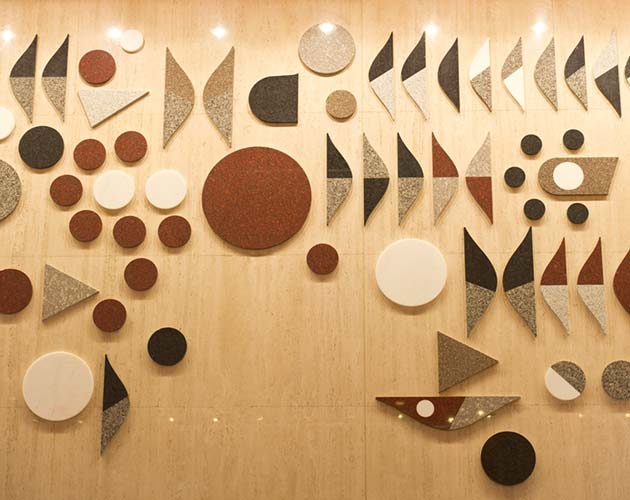

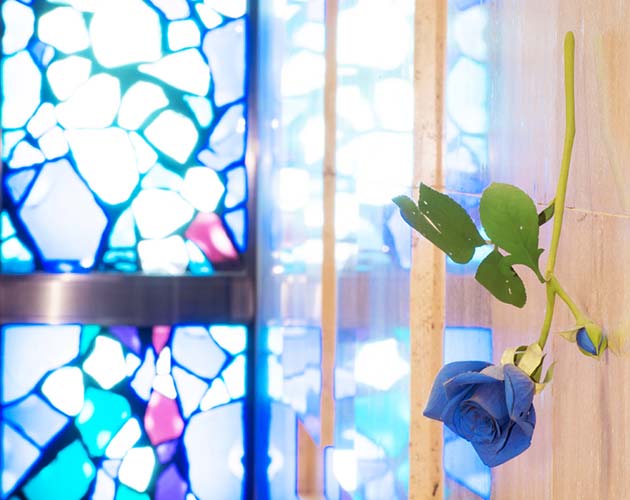
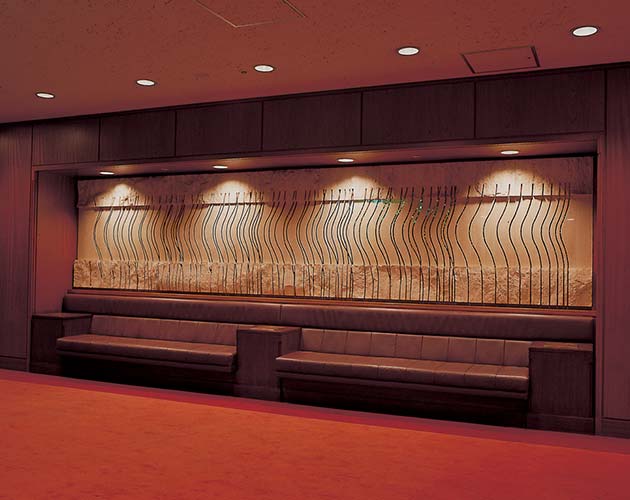
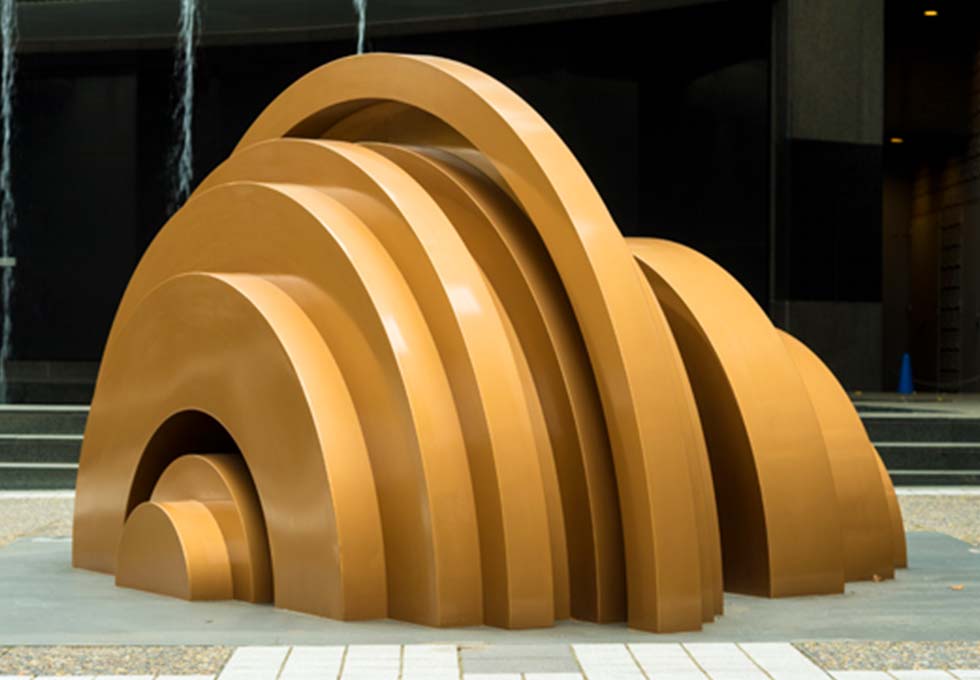
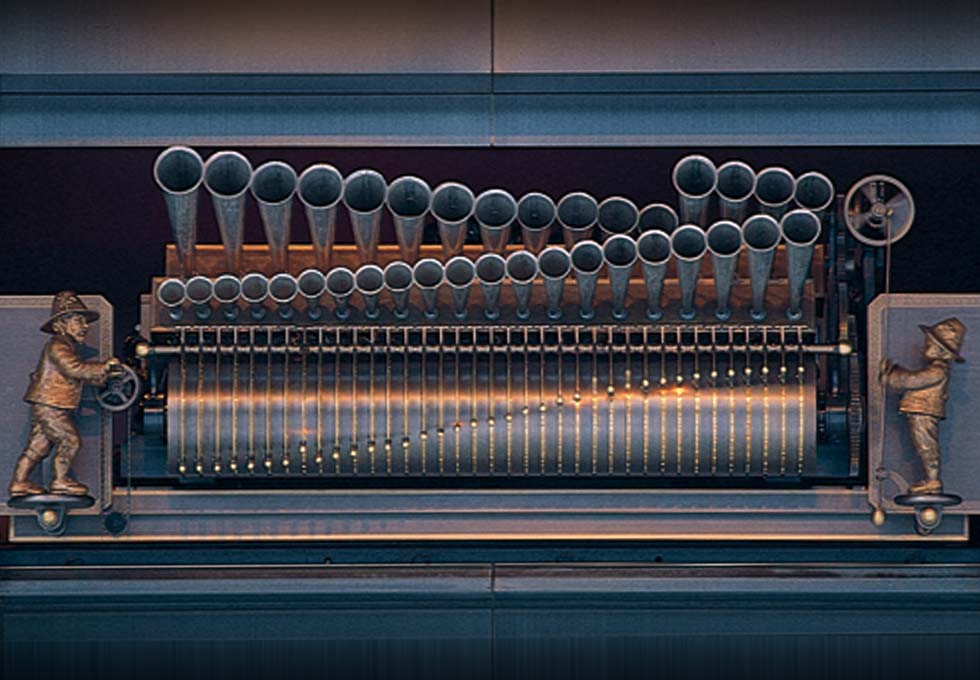
Commemorative plaques
Suntory Hall is in itself a magnificent instrument — the late Herbert von Karajan (1908-1989), who keenly advocated the vineyard style when Suntory Hall was being constructed and also attended the acoustic tests, praised the hall as ‘a jewel box of sound’.
Over the years, it has forged partnerships with several international renowned concert halls and has received many honours.
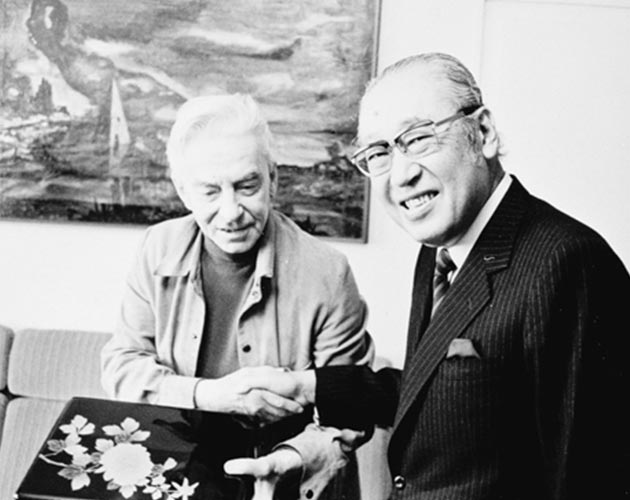
Message from Maestro Herbert von Karajan
In May 1988, I conducted a concert in this beautiful Suntory Hall with great delight. In many aspects, this hall reminded me of my beloved Berlin Philharmonic Hall. It is my sincere hope to return to this splendid hall one day.
I send my deepest appreciation to my friend Keizo Saji. With the creation of this building, he has made a great contribution to music that will enrich the lives of people in Japan and around the world.
Sincerely,
Herbert von Karajan
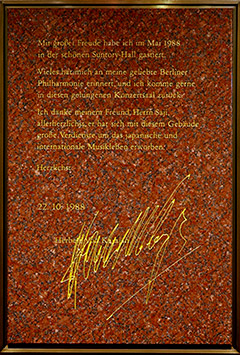
Keizo Saji Memorial Plaque
The history of Suntory Hall began with the passionate desire of Keizo Saji (1919-1999) ‘to make classical music an integral part of everyday culture for people in Japan’.
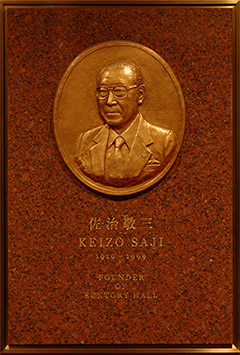
ARK Karajan Place
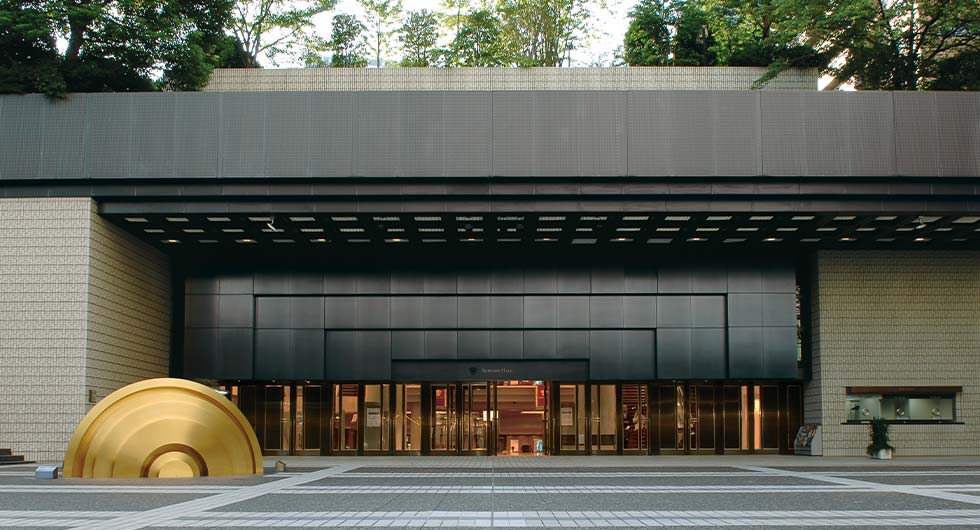
ARK Karajan Place located in front of Suntory Hall was named after the late Herbert von Karajan. The name was adopted in 1998, celebrating the 90th anniversary of Karajan’s birth.
There are only three squares in the world that bear Karajan’s name: the squares in front of Vienna State Opera (Wiener Staatsoper) and Great Festival Hall (Grosses Festspielhaus) in Salzburg (both are in Austria, Karajan’s home country), and ARK Karajan Place. ARK Karajan Place is adorned with a plaque presented
by the Karajan Foundation.
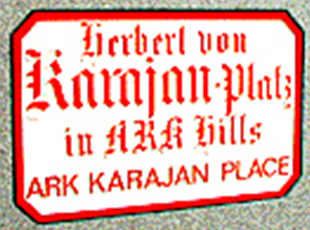
Plaque commemorating the partnership with the Musikverein in Vienna
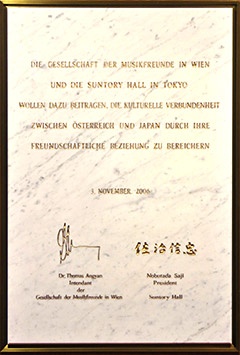
The Musikverein in Vienna and Suntory Hall have enjoyed many years of partnership, sharing the same aim of strengthening cultural ties between Japan and Austria. In 2007, another plaque was installed at the Musikverein.
Franz Schalk Gold Medal
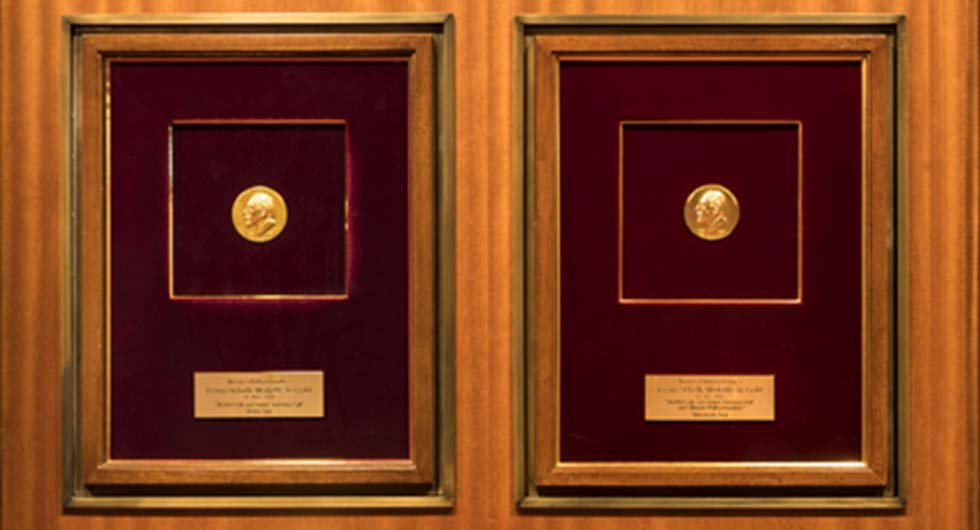
The Vienna Philharmonic Orchestra (Wiener Philharmoniker) awarded the Franz Schalk Gold Medal in 1999 to Keizo Saji (Founding President of Suntory Hall) and in 2016 to Nobutada Saji (Third President of Suntory Hall). Named after Franz Schalk, director of the Vienna Court Opera, the medal is presented to those who have made extraordinary contributions to promoting the Vienna Philharmonic Orchestra. This Gold Medal has been awarded to 26 people in the past 50 years.
Plaque commemorating the partnership with
Carnegie Hall (2011)
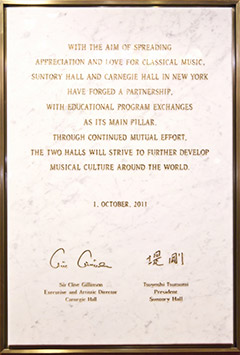
Carnegie Hall and Suntory Hall agreed to work jointly towards the musical education for the next generation. As a result of this partnership, the innovative, world-class programmes of Carnegie Hall have been brought to Suntory Hall.
